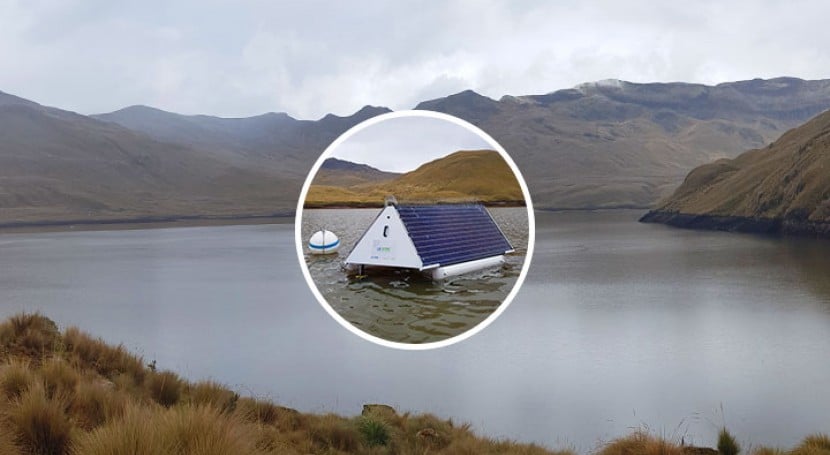The world’s freshwater systems are undergoing significant changes due to rising temperatures, fluctuating acidity, and shifting nutrient concentrations, impacting their functionality. Researchers are revealing alarming shifts in mountain headwaters that supply freshwater to almost half the global population. A recent publication in Global Change Biology points to a surprising connection between atmospheric dust and algal blooms. After many years of careful analysis of mountain lakes, Juan Manuel González‐Olalla and James Powell discovered that dust deposition from atmosphere fuels algae growth. The research emphasizes the unprecedented occurrence of toxic algal blooms in mountain lakes. As we delve deeper into the implications of this unexpected link, it becomes crucial to understand the underlying reasons for this phenomenon.
Increased Phosphorus Levels in Modern Dust
Agricultural activities, industrial and urban developments and combustion processes produce dust that is richer in phosphorus in comparison to natural dust. Phosphorus serves as nutrient for algae. Consequently, their ability to tolerate different environmental stressors, such as alterations in water temperature, salinity, pH levels, pollutant concentrations, and light availability, becomes significantly enhanced. Therefore, their growth potential increases, potentially leading to toxic algal blooms. This creates water quality problems and poses risks to biodiversity and the health of aquatic ecosystems.
Phosphate Monitoring Challenges and Solutions
Traditional methods of measuring phosphorus levels in freshwater systems may not be sufficient to capture rapid changes caused by atmospheric dust deposition. When it comes to mountain lakes, applying these methods becomes even more challenging and expensive, due to their remote and difficult-to-access locations. Traditional laboratory analysis of phosphorus requires expensive equipment and trained personnel, while sample collection, transportation, preparation, and analysis are significantly time-consuming. All of these factors often result in delays in obtaining test results and applying appropriate measures.
Phosphorus is typically found in nature as phosphate (PO4), existing as an ion bound to oxygen. In light of the groundbreaking research revealing a surprising connection between atmospheric dust and algal growth, monitoring phosphate levels in real time has never been more critical. The study underscores the significant role that phosphorus, carried by modern dust, plays in fueling algal blooms and compromising the health of aquatic ecosystems.
Real-time monitoring allows for early detection of spikes in phosphate levels, enabling prompt intervention to prevent harmful algal blooms and mitigate their impacts on aquatic ecosystems. Additionally, real-time data provides valuable insights into the dynamics of nutrient cycling and pollution patterns, aiding in the development of more effective water management strategies. This is where LG Sonic’s phosphate monitoring solution comes into play.
With our state-of-the-art PO4 sensor, we offer continuous monitoring of phosphate levels in water bodies, ensuring precision and efficiency. Our real-time monitoring capability enables early detection of changes in phosphate concentrations, offering timely warnings of potential algal bloom events. By adopting this proactive approach, we empower water managers to take swift and targeted actions to combat nutrient pollution and safeguard our precious water resources from the harmful effects of algal overgrowth.
LG Sonic’s Equipment Installed at 4000 Meters Above Sea Level
LG Sonic has successfully installed 8 MPC-Buoy systems in the Salve Faccha reservoir, a crucial source of drinking water for the city of Quito, Ecuador. Nestled in a remote area, this reservoir faced persistent challenges with algae blooms threatening water quality. To combat this issue, solar-powered algae control systems were strategically deployed. Remarkably, just two weeks after the installation of the MPC-Buoy systems, significant improvements in water quality were observed.
The Salve Faccha reservoir, perched in the highlands of Quito at an altitude of 4000 meters, holds immense importance as a primary drinking water source, supplying approximately 40% of the city’s water needs. In response to algae-related concerns, the implementation of eight MPC-Buoy systems emerged as a critical solution for effective algae control. Given its remote location, the integration of LG Sonic’s advanced water quality software, MPC-View, has been instrumental. This software enables seamless monitoring of the reservoir’s water quality, empowering authorities to proactively address algae issues and ensure the continued delivery of clean, safe drinking water to the residents of Quito.
The successful implementation of LG Sonic’s technology underscores the importance of real-time water quality monitoring, particularly in remote and environmentally sensitive areas. LG Sonic’s cutting-edge technology enables us to stay ahead of the curve in combating the repercussions of atmospheric dust deposition on algal growth. By harnessing the power of real-time data, we can safeguard the health and sustainability of our aquatic ecosystems for generations to come.
